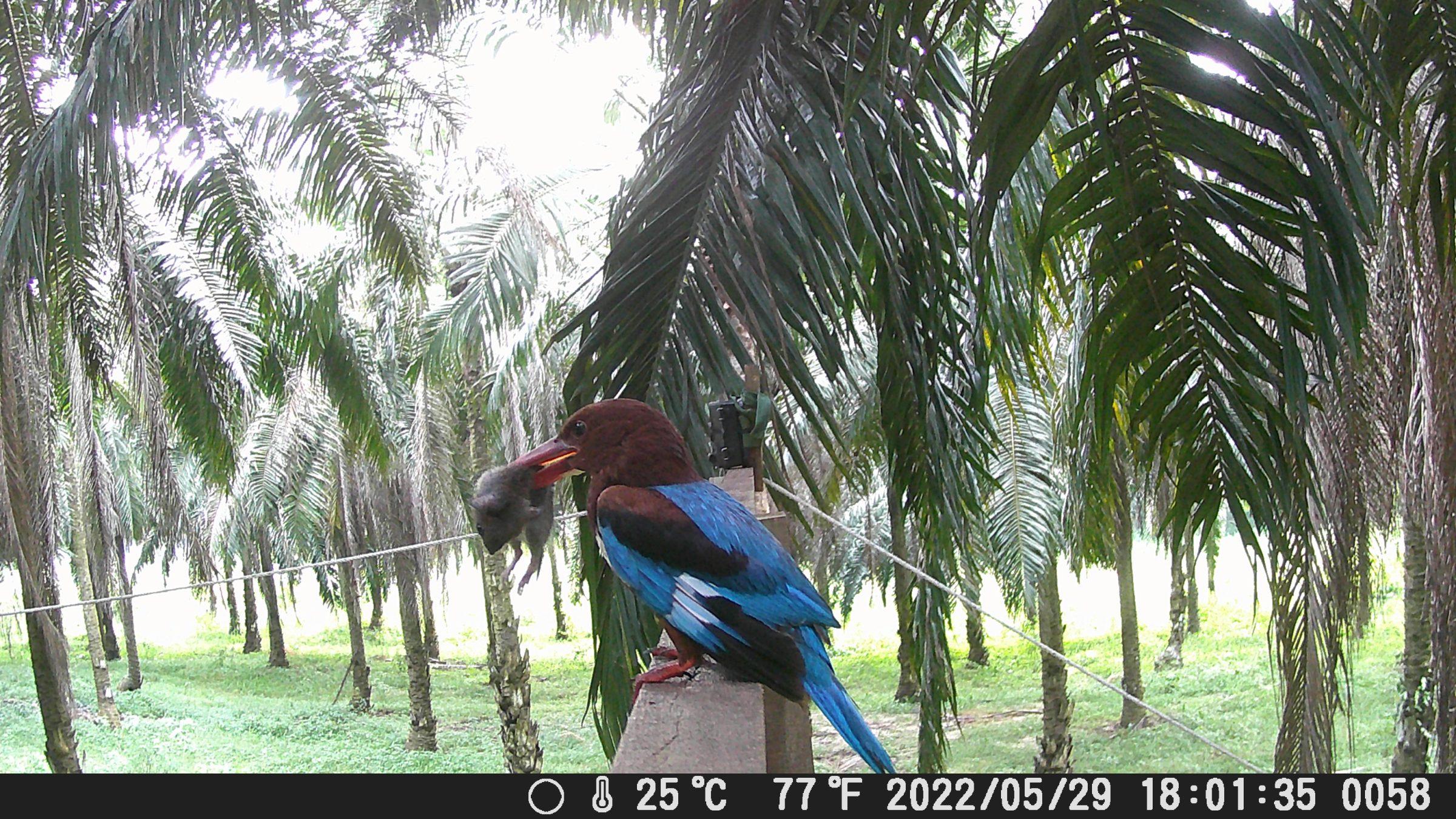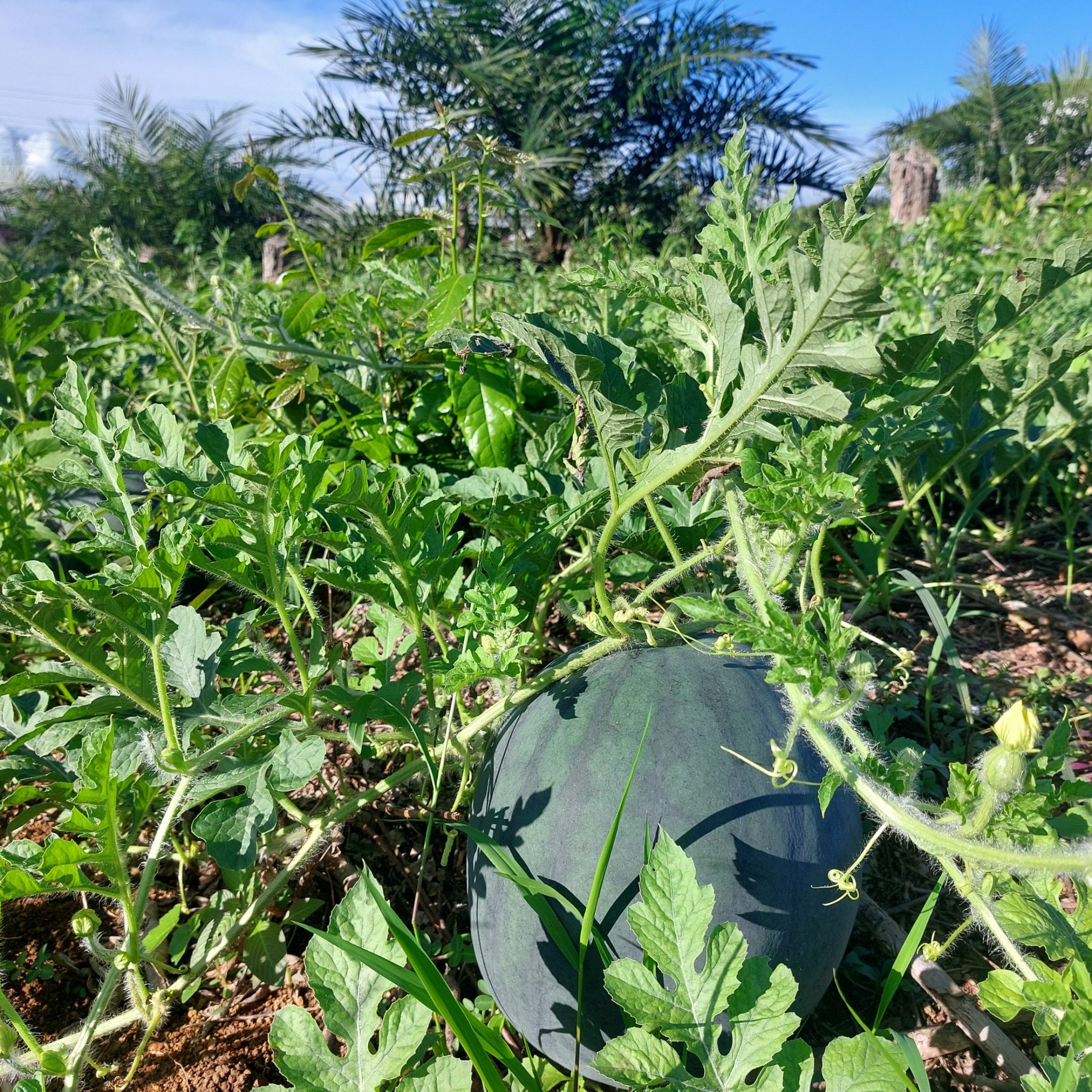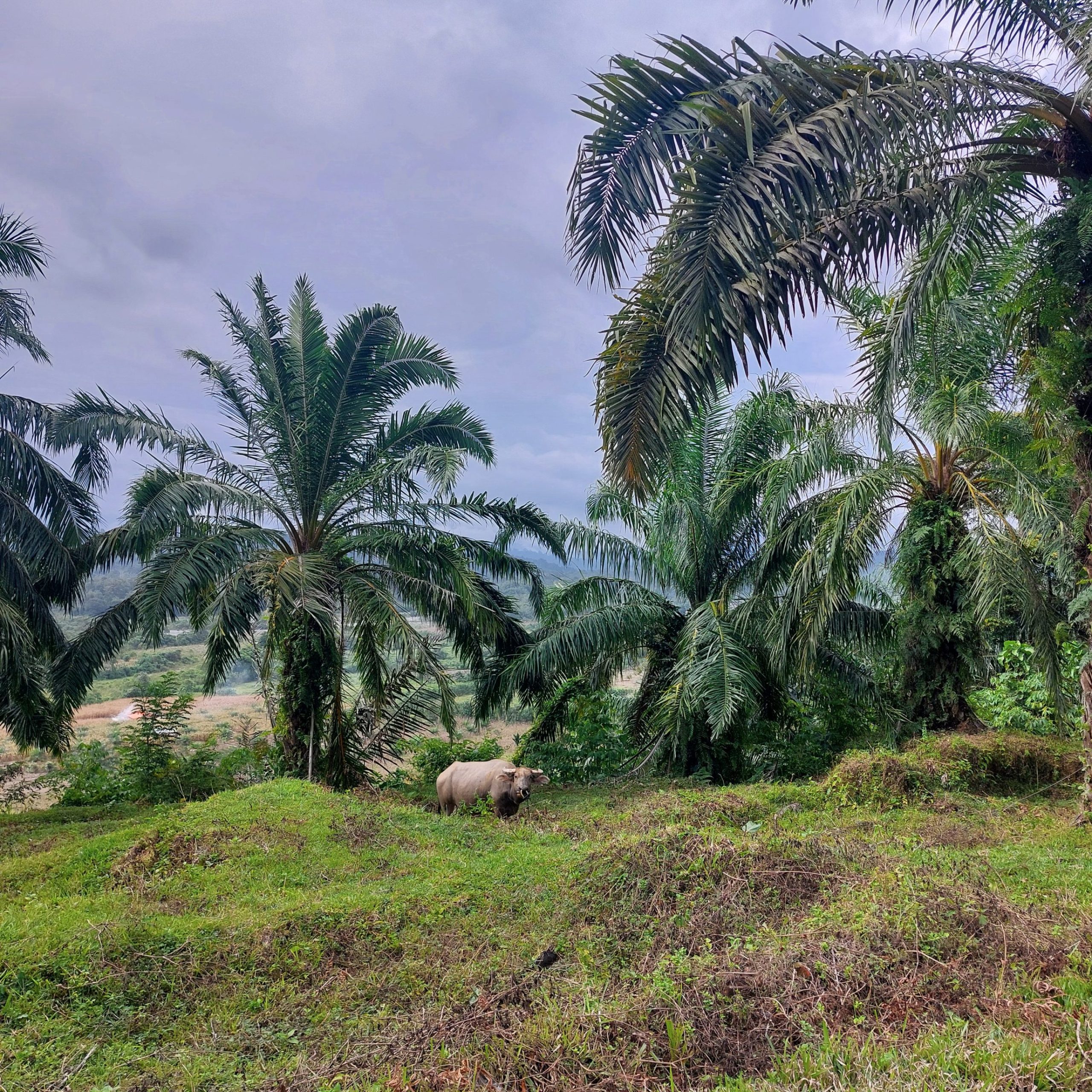What is an orangutan doing in an oil palm plantation? How to boost biodiversity in plantation landscapes
“Is there any wildlife here?” I asked the plantation worker. “Yes there is, we see monkeys, deer, sometimes even a sun bear.” “And birds too,” his colleague adds from a distance. What are these animals doing here?
There are almost 30 million hectares of oil palm plantations across the globe. Plantations are not forest: they are home to fewer species, have simplified vegetation structure and suffer from human disturbance. But that doesn’t mean plantations have no role to support and increase biodiversity values. Animals such as the orangutan, but also deer, elephants, giant anteaters or sun bears, make use of oil palm plantations.
Of course most animals do not live exclusively in plantations. But there is an increasing change of view that wildlife can survive in disturbed and mosaic landscapes. This means knowing animal behaviour and understanding their movement. Did you know that male orangutans can travel up to 10 km through oil palm plantations and navigate using rivers or high points?
Biodiversity in plantations is not just about large mammals.
But biodiversity in plantations is not just about large mammals. Small termites, bacteria or fungi are as important for ecosystems as elephants or orangutans. Together these forms of biodiversity create the basis for ecological functioning of the world we live in. They must therefore be taken into account as a whole for effective biodiversity protection.
Allowing more floral diversity and complexity in undergrowth creates habitat for insects and other ‘hidden biodiversity’ in oil palm plantations. Insects can benefit the oil palm by controlling pests, improve soil and pollinate palms. As insects depend on undergrowth, limiting the frequency of spraying herbicides or only targeting specific zones will boost their occurrence and diversity. Understory vegetation also increases soil fertility, water-holding capacity and prevents soil erosion.

Probably the easiest practice to boost biodiversity: placing artificial bird perches attracts predatory birds that can enhance biological pest control, especially against rodents. Perches are vital as a heightened vantage punt for hunting, resting, preying, and roosting of predatory birds. White-throated Kingfisher (left and bottom right) and Collared Kingfisher (top right) prey on pups and juvenile rodents, potentially controlling rodents at pre-breeding stage. This complements presence of introduced barn owls who prey on adults and by night only.
Photo credits: Badrul Azhar, Universiti Putra Malaysia (UPM)


Cattle grazing and intercropping between young oil palms reduces weeds and therefore use of herbicides. Interestingly it is usually something that is only applied by smallholders – not by companies who are still reluctant to try this.
Photo credit: Thijs Pasmans and PT Arconesia
But my favourite biodiversity practice however, is still under–exposed.
But my favourite biodiversity practice however, is still under-exposed: redesigning the plantation landscape. The need for replanting is an excellent opportunity for that. Replanting aged oil palms, usually a clear-cut activity, takes away the biodiversity and habitat complexity that has been built up for 25-30 years: a ‘second wave’ of biodiversity loss.
However, when well-planned, replanting can contribute to improved permeability, connectivity and reducing negative impact on habitat and microclimates in plantations. For example, by planting every other row or alternating between oil palm patches and integrating new plantings with ‘forest islands’ and intercropping. An approach already happening ‘naturally’ in smallholder plantation landscapes because replanting is done on a smaller scale and not at the same time. Can we learn from what is happening here?
As we walk back to the car I can’t stop feeling how excited I am: it’s not just a paper reality, animals are really making use of plantations. And I am not even at an oil palm plantation, but walking between endless rows of natural rubber trees. Maybe there is a need to update the visual guide and include other tree crops as well.
Want to know more?
Read the IUCN NL report called “Boosting Biodiversity: a visual guide to promote biodiversity values in oil palm landscapes”. The guide aims to show the potential of these existing plantations for biodiversity in fragmented landscapes. By doing so we want to push the debate on sustainable palm oil to go beyond ‘stopping further loss’ only and move towards actively including biodiversity positive practices in what is already out there.
Visual guide to boosting biodiversity in palm oil landscapes | IUCN NL
About the author:
Thijs runs his own sustainability consultancy since 2019. He has 11 years of experience in policy development, due diligence regulations and certifications, especially in palm oil. In 2022, he started supporting IUCN-NL in their advocacy on sustainable palm oil. He has written and contributed to studies and reports for organisations such as the RSPO and IUCN and helped develop Remediation and Compensation Plans for oil palm growers. He has also organised successful government to government dialogues and conferences as part of the secretary of the Amsterdam Declaration Partnership.